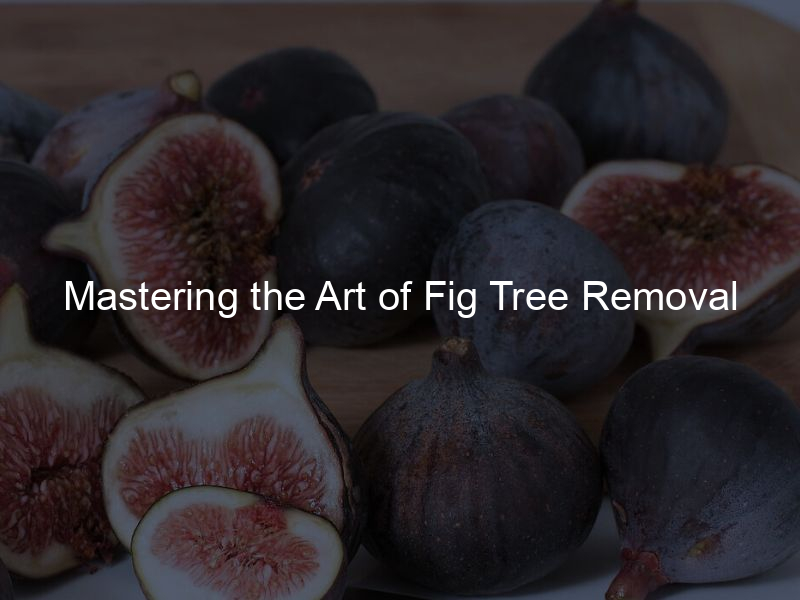Introduction to Fig Tree Maintenance
Fig trees are a wonderful addition to any garden. They not only provide delicious fruit but also add a touch of beauty to your outdoor space. However, like any other plant, fig trees require proper care and maintenance to thrive. In this section, we will delve into the importance of fig tree care and provide an overview of some essential gardening tips.
-
- Understanding the Importance of Fig Tree Care
Caring for your fig tree is crucial for several reasons. Firstly, proper care ensures that your tree grows healthy and strong, capable of bearing bountiful fruit. Secondly, it helps prevent diseases and pests that can harm your tree and reduce its lifespan. Lastly, well-maintained fig trees are more resilient to harsh weather conditions, ensuring they can thrive in various climates.
-
- Overview of Fig Tree Gardening Tips
Fig tree care involves several key steps. These include:
-
-
- Watering: Fig trees need regular watering, especially during dry periods. However, avoid overwatering as it can lead to root rot.
- Pruning: Pruning helps shape the tree and promotes better fruit production. It’s best to prune your fig tree during the dormant season.
- Fertilizing: Fig trees benefit from regular fertilization. Use a balanced fertilizer to provide the necessary nutrients for growth and fruit production.
- Pest Control: Keep an eye out for common pests like aphids and fig beetles. Use organic pesticides to keep these pests at bay.
-
Remember, every fig tree is unique and may require different care techniques. It’s always best to observe your tree and adjust your care routine as needed.
In the following sections, we will delve deeper into these care techniques, providing you with a comprehensive guide to mastering fig tree care.
Beginner’s Guide to Fig Tree Care
Are you new to the world of fig tree nurturing? Fear not! This guide is your one-stop-shop for all things fig tree-related. These magnificent trees are a gardener’s delight, offering both a cool canopy and mouth-watering fruit. But, they do need a bit of pampering to flourish. Let’s dive into the fascinating world of fig trees and learn how to help them thrive, even if you’re just starting out.
Understanding Fig Trees
Before we delve into the specifics of fig tree care, it’s important to understand what fig trees are and the different types that exist.
-
- Types of fig trees
There are over 800 species of fig trees, but the most common ones for home gardens are the Common Fig Tree (Ficus carica) and the Weeping Fig Tree (Ficus benjamina). The Common Fig Tree is deciduous and known for its sweet fruit, while the Weeping Fig Tree is an evergreen popular for its ornamental value. You can learn more about different types of fig trees on Wikipedia.
-
- Fig tree cultivation for beginners
Fig trees are relatively easy to grow, making them a great choice for beginners. They prefer a sunny location and well-drained soil. Fig trees can be grown from seeds, cuttings, or purchased as young trees. The best time to plant a fig tree is in the early spring. Once planted, they require regular watering and fertilizing to ensure healthy growth.
Understanding the basics of fig trees is the first step towards mastering their care. In the next section, we will delve into the specifics of how to grow fig trees, including choosing the right location, planting, watering, and fertilizing.
How to Grow Fig Trees
Fig trees are a wonderful addition to any garden. They provide delicious fruit and add a touch of Mediterranean charm. Here are some key steps to successfully grow your own fig tree.
1. Choosing the Right Location
Fig trees love the sun. They need at least 8 hours of sunlight each day. Choose a location in your garden that gets plenty of sun and is protected from harsh winds. The soil should be well-draining. If you live in a colder climate, consider planting your fig tree near a south-facing wall to provide extra warmth.
2. Fig Tree Planting Guide
Plant your fig tree in the spring. Dig a hole twice as wide and deep as the root ball. Place the tree in the hole, making sure the top of the root ball is level with the ground. Fill the hole with soil, firming it gently around the base of the tree. Water thoroughly after planting.
3. Watering and Fertilizing
Fig trees need regular watering, especially during dry periods. However, avoid overwatering as this can lead to root rot. As for fertilizing, fig trees generally do not require much. A slow-release granular fertilizer applied in the spring should be sufficient. Always follow the manufacturer’s instructions when applying fertilizer.
Don’t forget, that nurturing fig trees requires a good deal of patience. You might have to wait a couple of years to enjoy a plentiful yield, but the anticipation will surely pay off. Enjoy your gardening journey!
Caring for Fig Trees
Ever thought about adding a fig tree to your indoor plant collection? It’s a great idea! But, just like any other plant, fig trees need some special attention to flourish. In this part of our guide, we’re going to talk about how to keep your indoor fig tree happy and healthy.
Indoor Fig Tree Care
Indoor fig trees are popular for their aesthetic appeal and the fresh, delicious fruit they produce. However, they require a certain level of care to ensure they remain healthy and productive. Here are some key aspects to consider:
- Lighting requirements: Fig trees love the sun. They need about 12-15 hours of sunlight each day. Place your fig tree near a south-facing window where it can get plenty of natural light. If you don’t have enough natural light, consider using a grow light.
- Watering and humidity: Fig trees prefer a humid environment. Mist the leaves with water regularly to maintain humidity. Water your fig tree when the top inch of soil feels dry to the touch. Overwatering can lead to root rot, so be careful not to water too much.
- Pruning and repotting: Pruning helps to maintain the shape of your fig tree and encourages new growth. Prune your fig tree in late winter or early spring before new growth starts. Repot your fig tree every two to three years to provide it with fresh soil and room to grow.
Remember, every fig tree is unique and may require slightly different care. Pay attention to your tree’s signals – if the leaves are dropping or turning yellow, it may need more light or less water. With a little attention and care, your indoor fig tree can thrive for years to come.
Outdoor Fig Tree Care
Fig trees are a wonderful addition to any garden, but they require specific care to thrive. Here are some key steps to ensure your outdoor fig tree stays healthy and productive.
Fig trees are deciduous and go through different stages throughout the year. In spring, new leaves will start to appear. This is the time to start watering your tree more frequently. In summer, the tree will be in full growth and may require watering every day, depending on the weather. In fall, the tree will start to lose its leaves and watering should be reduced. During winter, the tree is dormant and requires very little water.
2. Protecting from Pests and Diseases
Fig trees can be susceptible to a variety of pests and diseases. Common pests include fig beetles, aphids, and mealybugs. Regularly inspect your tree for signs of these pests and treat them with an appropriate pesticide if necessary. Diseases can include fig rust, leaf blight, and root rot. To prevent diseases, ensure your tree is properly watered and not overcrowded with other plants. If you notice any signs of disease, consult with a local nursery or extension service for treatment options.
Pruning should be done in late winter when the tree is dormant. Remove any dead or diseased branches, and trim back any branches that are growing too close to the center of the tree. This will help to improve air circulation and prevent disease. Fertilizing should be done in early spring, using a balanced fertilizer. Be careful not to over-fertilize, as this can lead to excessive leaf growth at the expense of fruit production.
Adhering to these guidelines will help your outdoor fig tree thrive and bear fruit for many seasons. Keep in mind, that each tree is one of a kind and might need a bit of personalized attention. Always keep an eye on your tree and tweak your care regimen if needed.
Fig Tree Care Tips
Ever wondered how to keep your fig tree in tip-top shape? Well, you’re in the right place! Let’s explore some handy tips to ensure your fig tree is the envy of every garden, and avoid those pesky fig tree issues that can crop up.
-
- Common mistakes to avoid
Fig trees are relatively easy to care for, but there are a few common mistakes that can hinder their growth and productivity. Here are some to avoid:
-
-
- Overwatering: Fig trees don’t require a lot of water. Overwatering can lead to root rot and other diseases. It’s best to water your fig tree only when the top inch of soil is dry.
- Incorrect Pruning: Pruning is essential for fig tree health, but incorrect pruning can harm the tree. Always prune your fig tree during the dormant season and remove only dead or diseased branches.
- Planting in Poor Soil: Fig trees need well-draining soil. Planting in clay or other poor-draining soils can lead to waterlogging and root diseases. Always amend your soil with organic matter before planting.
- How to handle common fig tree problems
-
Despite your best efforts, fig trees can sometimes encounter problems. Here’s how to handle the most common ones:
-
- Leaf Drop: If your fig tree is losing leaves, it may be due to a lack of water or a sudden change in temperature. Adjust your watering schedule and try to keep the tree in a stable environment.
- Fig Rust: This is a common disease that causes orange spots on the leaves. If you notice this, remove and dispose of the affected leaves and apply a fungicide.
- Root Rot: If your fig tree has yellow leaves or stunted growth, it may have root rot. This is often caused by overwatering. Reduce your watering and consider repotting the tree in fresh, well-draining soil.
Keep in mind, that every fig tree has its own personality and might need a bit of custom care. Stay alert to your tree’s individual requirements and modify your care strategy accordingly. With a dash of patience and a sprinkle of love, you can relish the fruits of a robust, fruitful fig tree for a long time.
Conclusion: Mastering Fig Tree Care
As we wrap up our adventure in the realm of fig tree nurturing, it’s a moment to ponder on our gained wisdom and anticipate what’s next. Tending to fig trees is a gratifying task that calls for perseverance, understanding, and a sharp eye for nuances. However, with the correct strategy, you can foster a robust and flourishing fig tree that will gift you with tasty fruit for many seasons ahead.
-
- Recap of key takeaways
Let’s revisit the main points we’ve covered:
-
-
- Understanding the importance of fig tree care, including the benefits of proper care such as healthy growth, disease prevention, and resilience to harsh weather conditions.
- Learning the basics of fig tree care, including understanding the different types of fig trees and the cultivation process for beginners.
- Mastering indoor fig tree care, focusing on lighting requirements, watering and humidity, and pruning and repotting.
- Avoiding common fig tree care mistakes, such as overwatering, incorrect pruning, and planting in poor soil.
- Handling common fig tree problems like leaf drop, fig rust, and root rot.
- Encouragement for continued learning and practice
-
Remember, mastering fig tree care is a journey, not a destination. There’s always more to learn and new techniques to try. Don’t be discouraged if you encounter challenges along the way. With patience and persistence, you’ll become a fig tree care expert in no time. Keep exploring, keep learning, and most importantly, keep enjoying the process. Your fig tree will thank you!
Want to dive deeper into the world of fig trees? Check out Wikipedia’s page on fig trees for a treasure trove of information. Keep those green thumbs up, happy gardening!









